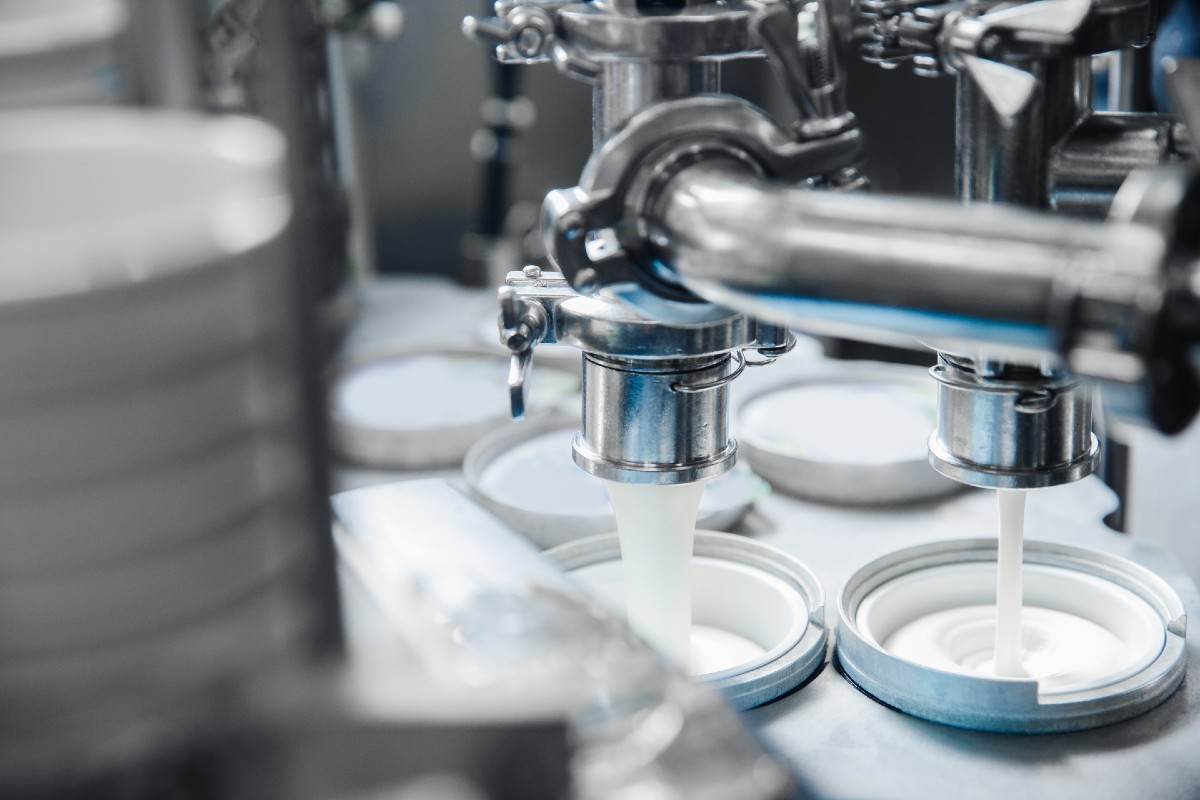For today’s dairy industry, awareness and interest in modernizing the industry’s infrastructure are higher than ever.
The industry has seen a huge advance in operation systems and up-to-date technology. The demand for dairy products has seen the growth and development of the industry expand, with new technology such as automation, robotics and artificial intelligence (AI).
In a survey commissioned by Dairy Processing in collaboration with Cypress Research, Kansas City, Mo., 126 participants representing national, mid-tier and smaller dairy processors were surveyed in July and August 2023 in order to better understand how company leaders are leveraging automation and technology in their dairy processing facilities.
The study sample included leadership from R&D, operations and executive management. Survey respondents from companies where revenue exceeded $100 million were classified as large processors, whereas respondents from companies that reported sales below $100 million were classified as small-to-medium sized processors, for the purposes of this survey.
“In this study, we dug into 113 specific areas … and key study findings, beginning with the drivers of purchasing key equipment and technologies,” said Marjorie Hellmer, president, Cypress Research. “After understanding processors’ investing goals, we turned to the key areas in the manufacturing process (out of the 113 potential areas) where processors have plans in place to upgrade existing equipment or are considering first-time purchases in the next 12 months (from the time of the survey).”
Top drivers
The online survey experience took dairy professionals on a journey through the major phases of dairy processing. Survey respondents went from the beginning to the middle and through the end of the manufacturing process, selecting areas where investments have been made at each phase, drilling further into subcategories of investments.
“Survey questions didn’t stop at equipment investments,” said Hellmer. “The research also reveals processor investments in various digital tools that can introduce greater process efficiencies with less dependence on manual efforts.”
When reviewing the top drivers of equipment and technology investments, processors rated the importance of 11 goals for their investments on a five-point scale. About 80% or more of respondents viewed the following three drivers as top investment priorities:
- Increasing revenue potential
- More consistent product quality
- Improving downtime/uptime ratios

Second-tier goals on the part of three-quarters of participants were led by gaining faster and more efficient automated processes compared to human labor, as well as increasing capacity. Additionally, 65% of participants prioritized eliminating the need for manual labor in processing facilities.
Processors were asked to report their company investment status, including whether their companies currently have some type of solution in place and either have plans in place to make upgrades in the next 12 months. Also, where companies don’t currently use the specified equipment, processors indicated whether they are either considering making a first-time purchase in the next 12 months or have no plans to do so in the near future.
“These trends illustrate ample opportunity for dairy processors to better leverage some of these tools to help create more efficiencies in their businesses,” Hellmer said.
A greater share of large companies are currently using some of these tools without short-term plans to upgrade while others do have plans to upgrade across areas or make first time company investments in:
- Virtual operator training
- At-machine display technologies and OEM portal access
- Progress with cloud-based Enterprise Resource Planning (ERP) systems
Just more than 30% are considering first-time company purchases in AI, while a share of professionals with mid-size and smaller processors are making progress with at-machine display technologies. These processors are considering first-time purchases of at-machine OEM portal access, remote machine operation and observation, and purchases related to the Industrial Internet of Things (IIOT) and AI.
Key takeaways
When isolating investment areas directly tied to moving the dairy industry forward through automation and modernization across the processing journey, from beginning to end, including investments in digital tools and technology, there are some key similarities, regardless of company size.
Plans are in place to upgrade current equipment and technology, or companies are considering first-time purchases. Large, mid-size and smaller processors all prioritize investments in:
- Automated cleaning/sanitation systems
- Recipe handling and traceability software
- Microfiltration and membrane technology
- Quality inspection software
- Complete robotic automation systems for primary and secondary packaging, palletizing
- Investments in digital tools, including at-machine display technologies, OEM portal access and AI in facilities
Survey respondents were also asked, “What dream innovation/technology would you expect to find in the dairy processing facility of the future?”
Responses varied and included items such as equipment and technology-specific upgrades, including total clean in place solutions, monitored by smart AI and integration with customer ERP for supply chain management. Sustainability-focused upgrades included cold pasteurization, whereas automation-related responses included automated lines being run by skeleton crews and complete facility automation.
The study reinforced that automation is a key component not only for optimizing the current workforce and reducing risk, but also providing significant opportunities to lower costs and enhance profitability by driving efficiencies. However, cost of automated systems can be a barrier for some companies, especially when comparing the small-to-medium processors to the larger processors, but that could change in the future with further innovation that could make these types of investments less cost prohibitive down the line.
Hellmer noted this study will help establish a baseline of where the industry is in terms of its modernization investments.
She added: “As we revisit the industry’s activity in future studies, it will be interesting to see how these trends change over time.”
Top investment priorities
Respondents were asked: How important are the following goals when leveraging automation and technology investments to help reduce workforce challenges and create greater operating efficiencies?
- Increasing revenue potential - 86%
- More consistent product quality - 85%
- Improving downtime/uptime ratios - 80%
- Faster, more efficient automated processes comparted to human labor - 74%
- Increasing capacity - 73%
- Eliminating need for manual labor - 65%
- Reducing time to product and implement engineering change notices - 59%
- Controlling every aspect of part revisions and in-activations (through ERP) - 48%
Interested in learning more?
To view more in-depth information about the Modernization of the US Dairy Processing Industry study, an on-demand webinar breaking down the survey results is available to view online.

